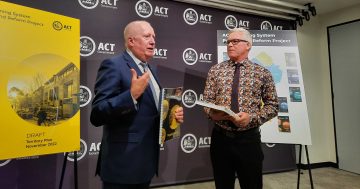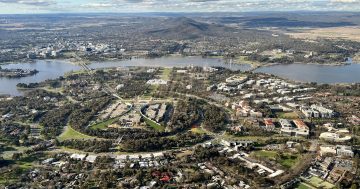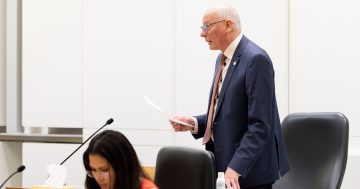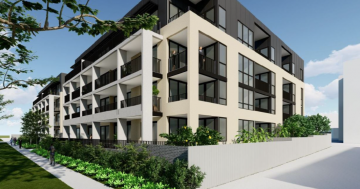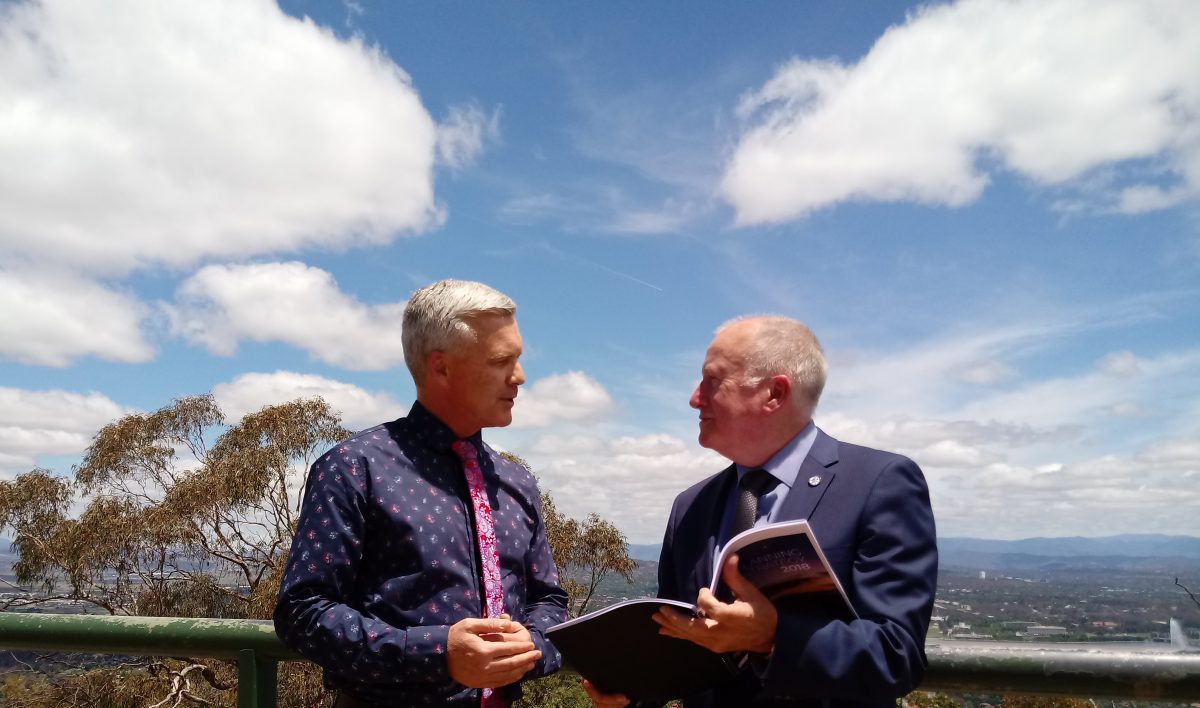
Chief planner Ben Ponton and Minister Mick Gentleman. Photo: File.
Canberra’s chief planner is backing professionalism, rather than politics, to define how the city will look over the next decade.
Ben Ponton, the architect of the new draft Territory Plan and the man at the top of the city’s planning apex, says politicians need to set policies, but planners should be delivering the outcomes.
“I think it really is important that you have the people who have been elected to represent the community, setting the policy and setting the framework, but not getting involved in day-to-day decisions,” he says.
“It’s particularly important as we move to an outcomes focused planning system where there is more subjectivity, you need professionals, who are suitably qualified – with the greatest of respect to our politicians – to make those assessments.
“If you look across the world, so many jurisdictions have moved away from even local councils, making decisions on significant development proposals for that very reason that it is too risky to be frank, that you’ll achieve a political outcome as opposed to a sound planning outcome.”
The new Territory Plan, delivered in November, is a major landmark for the Director-General of the ACT’s Environment, Planning and Sustainable Development Directorate.
So-called numeric indicators – the ratio of windows to walls, the required offsets – have been significantly reduced in favour of an outcomes-based approach intended to deliver better designed, more flexible outcomes for a rapidly developing city.
District identities are being defined that should fill the missing middle between individual building approvals and multi-suburb or Territory wide planning decisions.
There’s hope that planning approvals will be faster and better – a big call in a jurisdiction where progress can be agonisingly slow and dogged by third party appeals. Ponton says that a focus on greater transparency should fix this.
“What we’re doing right now is trying to engage with as many people as possible on the policy component. If the policy setting is right, you should be reasonably comfortable with what’s happening. What we often see is people don’t engage in the policy setting until it’s impacting them right next door.”
There’s a comprehensive piece of work going on to ensure that as many people as possible – and not just the usual voices – engage with consultation on the plan. But Mr Ponton acknowledges that development consultation hasn’t always had a good reputation in the ACT.
“The reality is that we’re a relatively small jurisdiction. So when decisions are made, some will think that that’s the politicians making the decision anyway. I would argue, we need to flip it so that we get the politicians to be thinking that if the outcome isn’t being achieved, let’s think about whether the policy setting is right.
“They have heard the Canberra community saying we’re getting outcomes that we’re not comfortable with. So they’ve embarked on the planning system review and reform project, which is about fixing the system that they are responsible for, but leave the final decisions with the experts,” he says.
Third party appeals from the community are one thing, but how will a stronger focus on design and fit for district identity work for developers who are working on a huge scale and with often huge costs (and risks)?
The numeric system focus was relatively straightforward: if a development had the requisite setbacks, height restrictions and other definable factors, it was bound for approval no matter how unattractive or poorly matched with the location.
Again, there’s optimism that the design review panel will resolve some of these issues. “I think it will force those people to actually think about what it is they’re designing,” he says. “They’ll need to make a certain profit, that’s fair enough, they will be thinking about a certain number of dwellings on this site or a particular outcome.
“But those types of developments will have to be considered by the design review panel. And at the end of the day, I think they’ll be judged by the Canberra community if they try to put something forward that just doesn’t hit the mark.
“If it’s more subjective, and we can start to bring in what the community is telling us about what is important to their local area. We can say ‘Actually, no, developer X, we’re hearing the local community is not happy and comparing that to the outcomes in the Territory Plan, you’re not hitting the mark. So we’re going to say no to you’.
“I think that that’s going to drive the change.”












